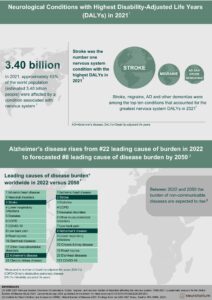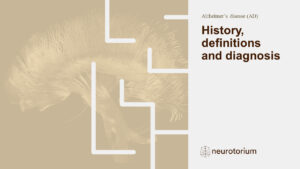While the most prominent risk factor for AD is increasing age, the disease develops as a result of several risk factors that converge. Environmental factors such as traumatic brain injury, ischemia, hypoxia, neurotoxins, infections, lifestyle, metabolic parameters, and comorbid cardiovascular disease also contribute to the development of dementia.
Read more about genetic and environmental risk factors in Alzheimer’s disease





